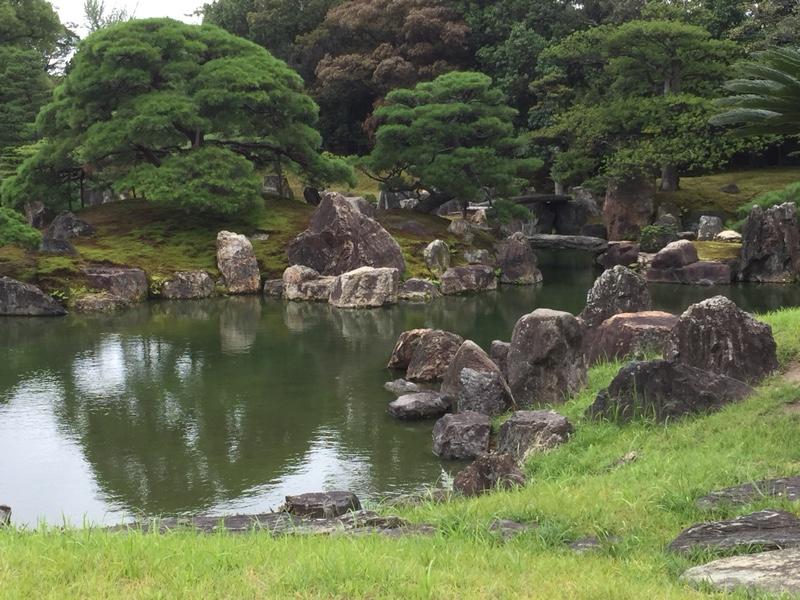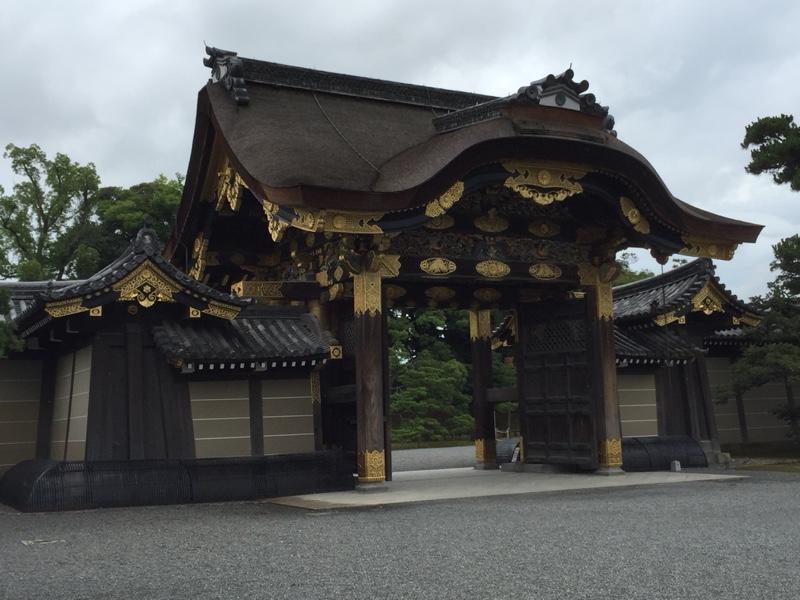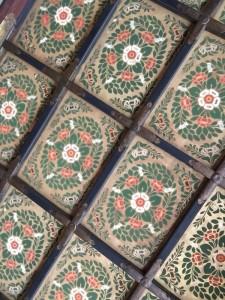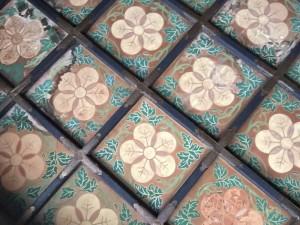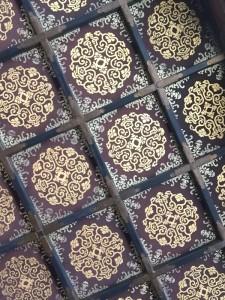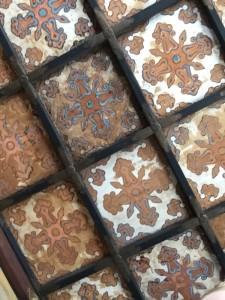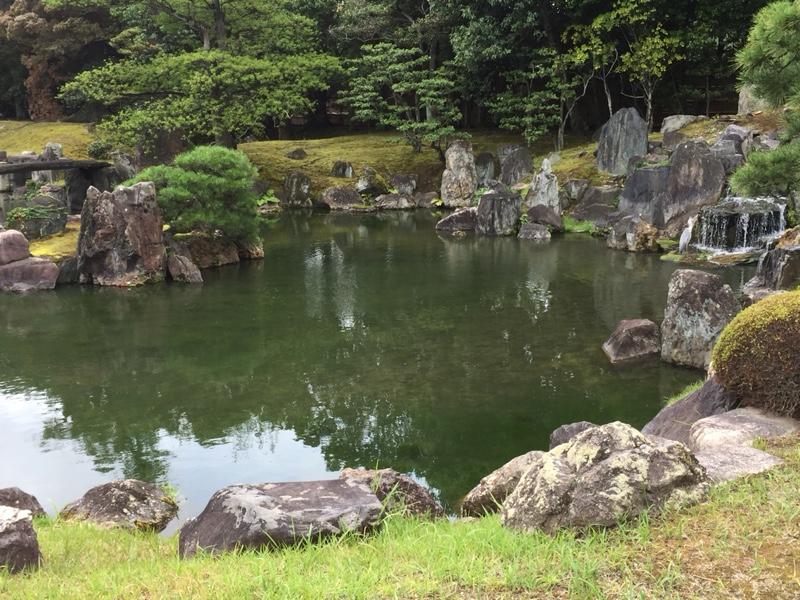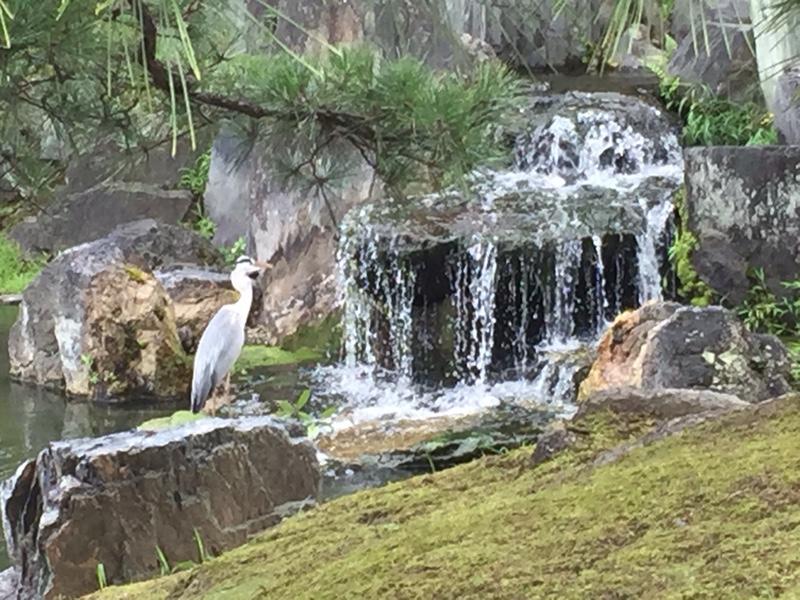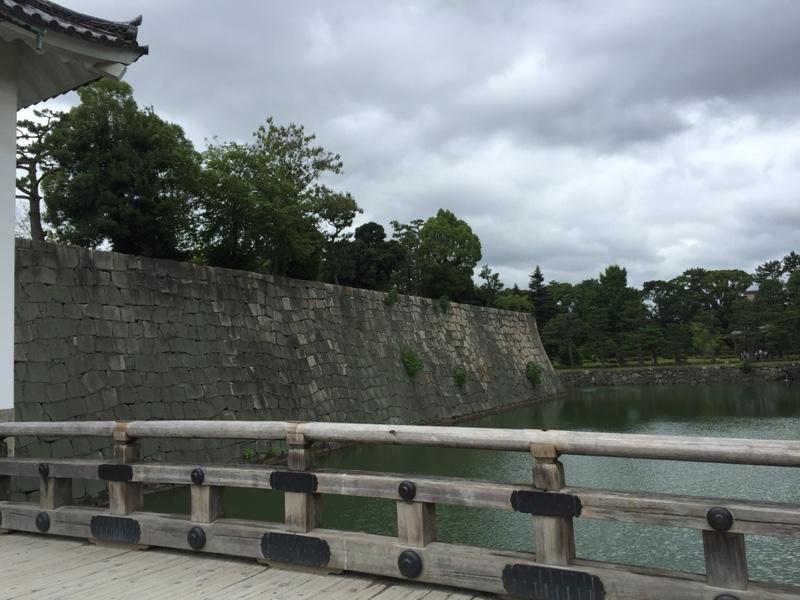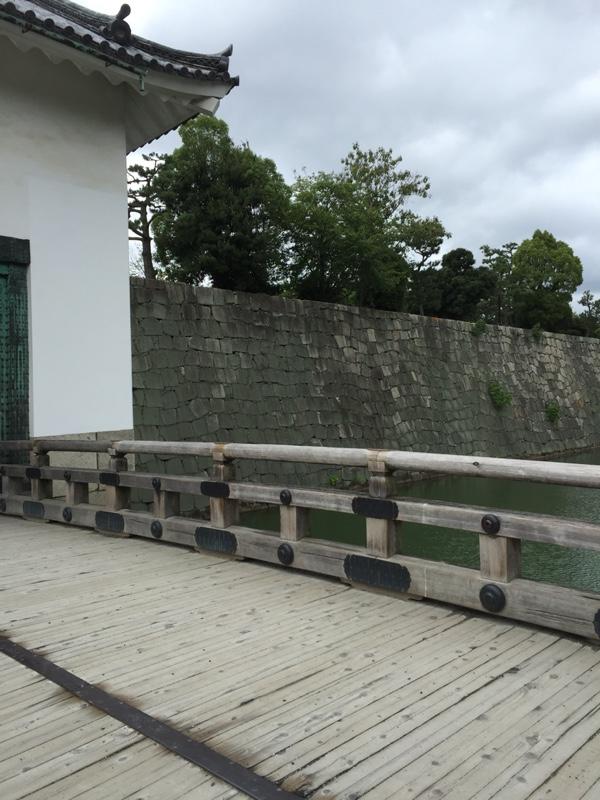Oh Great Lonely Planet! Why hast thou forsaken us?!
We set off this morning to visit the Kyoto Imperial Palace. According to the Lonely Planet, we needed to arrive at the Imperial Household Agency 30 mins before our preferred tour time (tours guided in English are at 10am and 2pm) with passports to acquire a permit to allow entry to the Imperial Palace. Only we arrived at 9:25am to find a sign saying the tours were fully booked and the next available tour was at 3:30pm and was not guided in English. Bugger. Bugger. Bugger.
Turns out that tours can be booked online and usual sell out month in advance. Thanks Lonely Planet. Bastards!
So here is what we saw of the Imperial Palace.
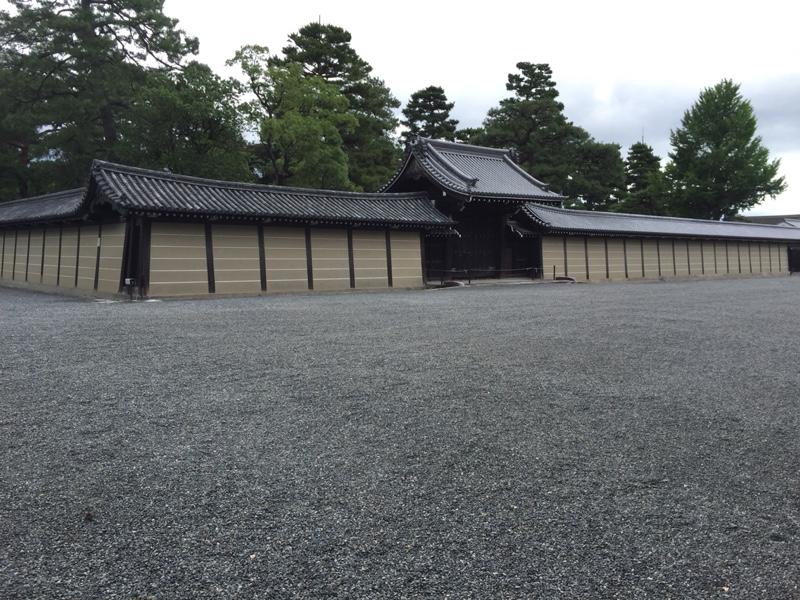 We wandered around the Imperial gardens for a while – Read: embarked on a 2km sweaty and disgusting trudge through the gravel paths (that is horridly similar to walking in crunchy sand!) that surround the Palace, propelled by equal parts disappointment and determination, headed vaguely in the direction of a bus stop that would take us to Nijojo Castle. On the way we found a lovely little shrine – name unknown, no English signage and it wasn’t on our map… But very quaint.
We wandered around the Imperial gardens for a while – Read: embarked on a 2km sweaty and disgusting trudge through the gravel paths (that is horridly similar to walking in crunchy sand!) that surround the Palace, propelled by equal parts disappointment and determination, headed vaguely in the direction of a bus stop that would take us to Nijojo Castle. On the way we found a lovely little shrine – name unknown, no English signage and it wasn’t on our map… But very quaint.
 I have come to quite like the guard dogs at the entrance to all the shrines… The one on the right always represents being born and coming into the world crying loudly. The one on the left is always depicted with his mouth closed, as this is how we leave this world… Still and quiet.
I have come to quite like the guard dogs at the entrance to all the shrines… The one on the right always represents being born and coming into the world crying loudly. The one on the left is always depicted with his mouth closed, as this is how we leave this world… Still and quiet. 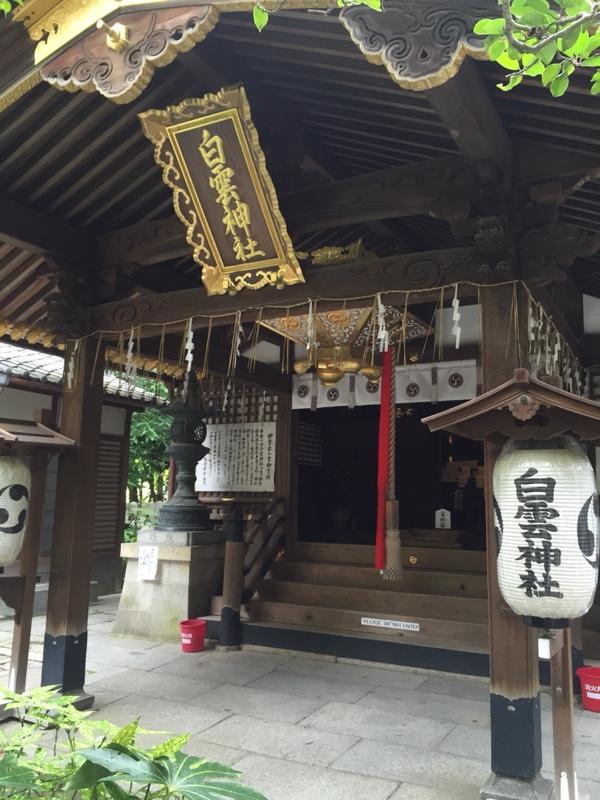

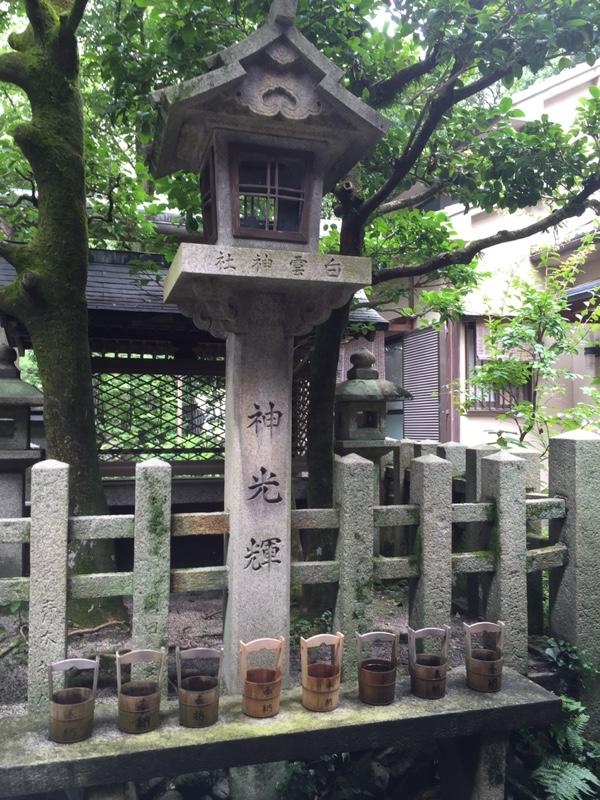
 We noticed a New Year theme in the offerings at this little shrine – symbols of horses, monkeys, sheep, goats and other animals associated with the Ch
We noticed a New Year theme in the offerings at this little shrine – symbols of horses, monkeys, sheep, goats and other animals associated with the Ch
We eventually made it to the bus and after getting on one heading in the wrong direction for two stops first, found ourselves at Nijojo Castle. The castle was originally built in 1603 as the official Kyoto residence of the first Tokugawa Shogun, Iemitsu. Nijojo is considered the finest example of early Edo period and Momoyama culture in Japan as it is designed in the typical Edo style but also has many lavish paintings, sculptures and carvings that Iemetsu commissioned.
In 1867 when Yoshinobu the fifteenth Tokugawa Shogun returned sovereignty to the Emperor, the castle became propert of the Imperial family. In 1884, it was donated to the city of Kyoto and renamed Nijo Castle (Nijo-jo) in 1939. It is now a UNESCO World Heritage Site (since 1994).
Inside the roof of this main gate is an excellent example of the wood working that we saw at the Kyoto Traditional Handicrafts Museum yesterday. Absolutely gorgeous!!
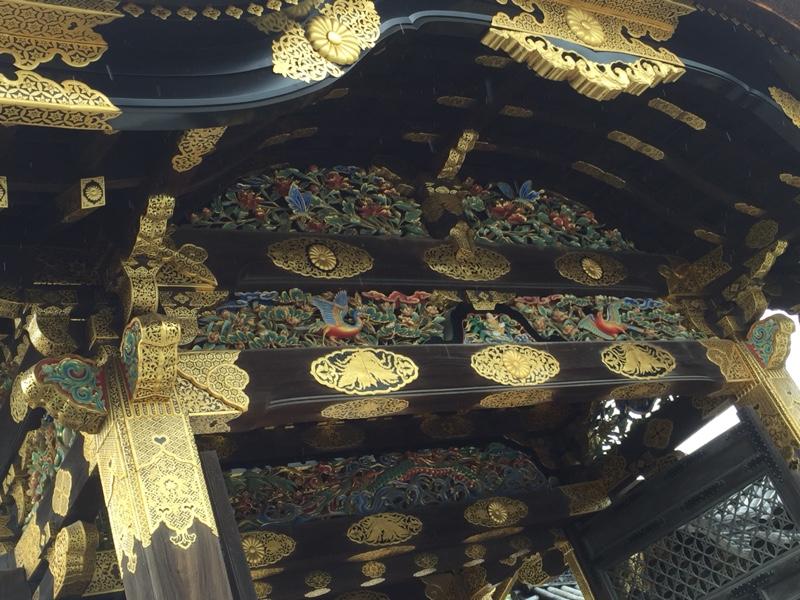
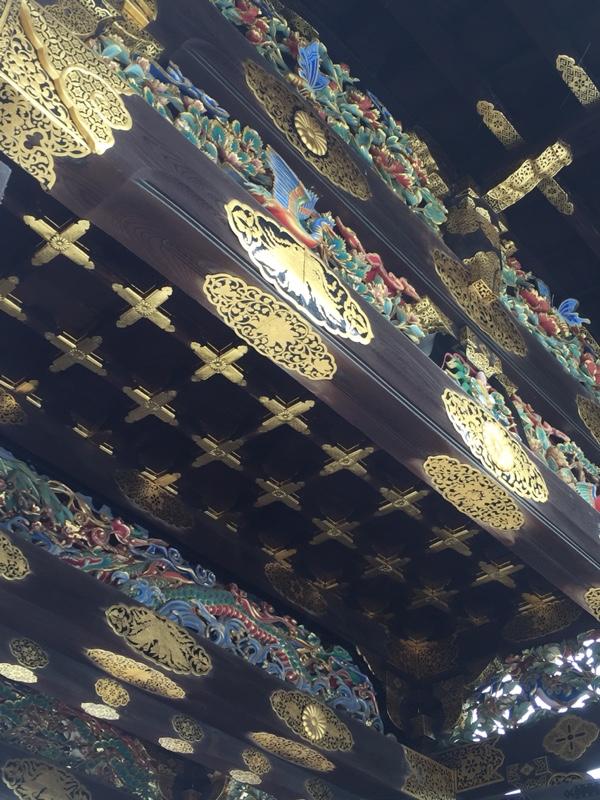 The Ninomaru Palace is constructed in the shion-zukuri architectural style, which was favoured by the warrior class. It consists of many linked buildings connected by corridors. The entire floor area of the palace is 3,300sqm, has 33 rooms and over 800 tatami mats. The golden wall paintings were done by prominent members of the Kano School (the originals now housed in a climate controlled gallery within the complex, and reproductions are within the building).
The Ninomaru Palace is constructed in the shion-zukuri architectural style, which was favoured by the warrior class. It consists of many linked buildings connected by corridors. The entire floor area of the palace is 3,300sqm, has 33 rooms and over 800 tatami mats. The golden wall paintings were done by prominent members of the Kano School (the originals now housed in a climate controlled gallery within the complex, and reproductions are within the building).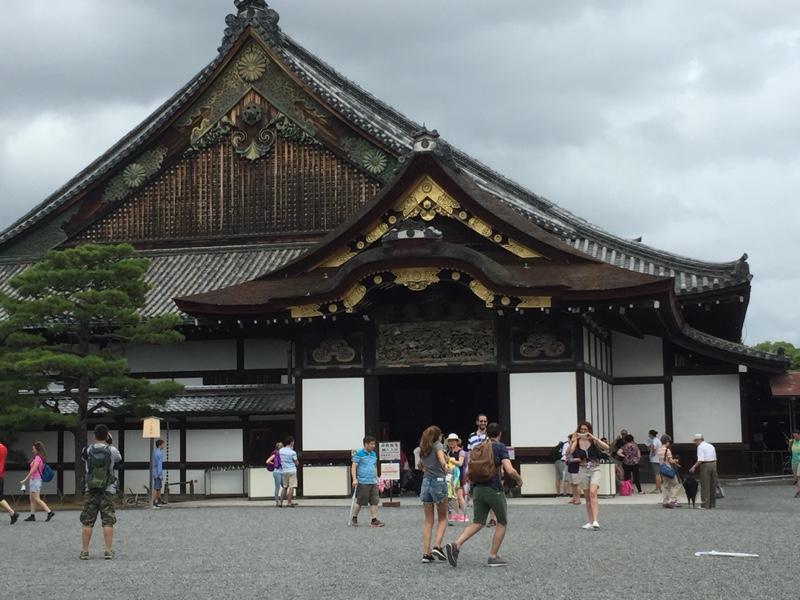
All the corridors in the Ninomaur Palace are designed to ‘chirp’ when you walk on them to warn people of intruders or people coming in their direction. These are called ‘nightingale floors’ and they do actually sounds like birds tweeting with lots of people moving over them.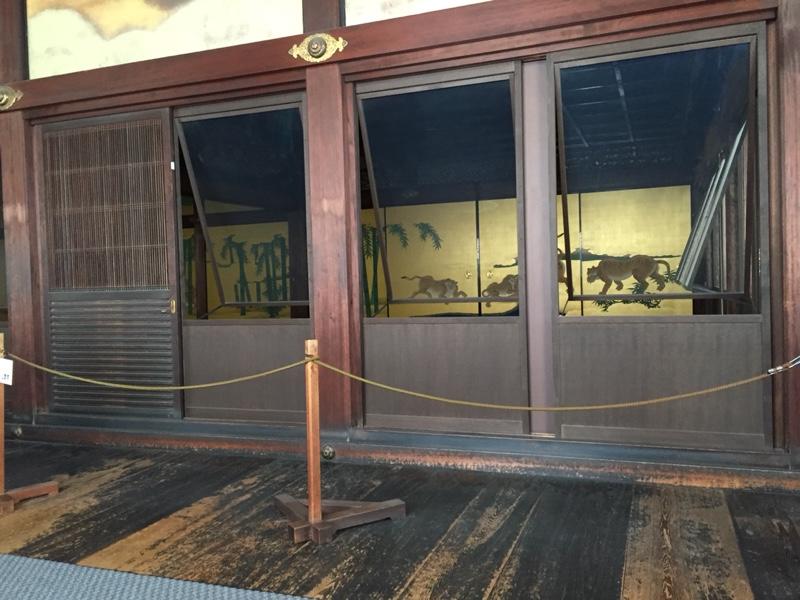

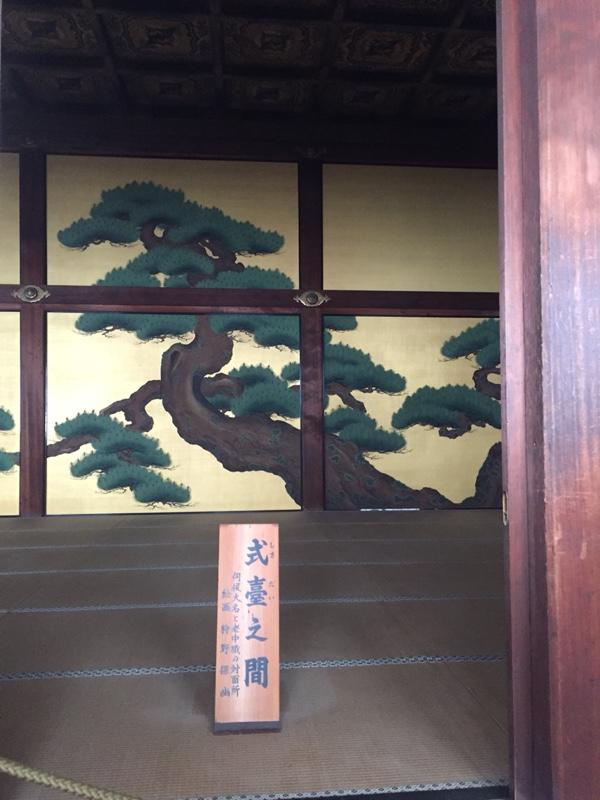
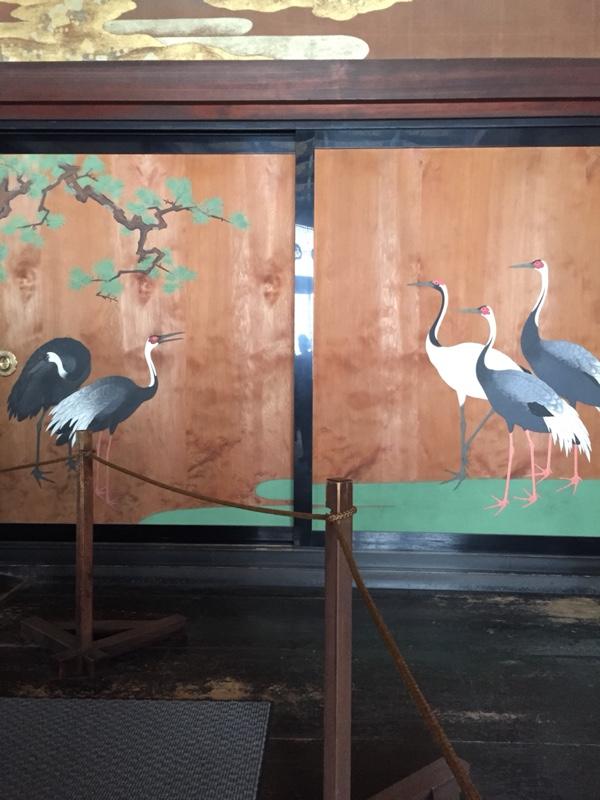
Ohiroma Ichi-no-ma. In October 1867, the fifteenth Shogun, Yoshinobu summoned the country’s feudal lords to this very rom and declared that sovereignty would be restored to the Emperor. In effect brought 270 years of Tokugawa Shogun military rule to an end.
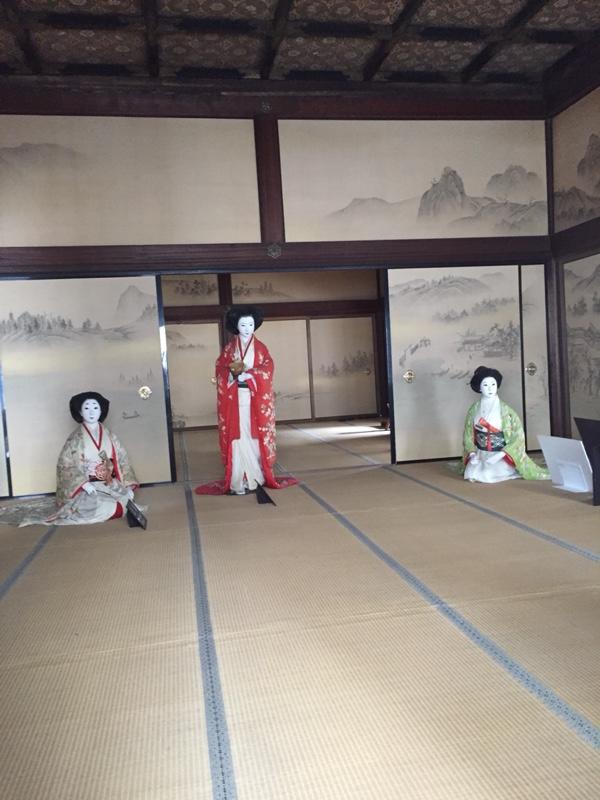 I found the ceilings fascinating inside the palace, in each different section of the palace, a different design had been used to decorate the ceiling. The were approximately 15′ high, and constructed of a lattice work and featured repeated painted designs. *cough cough* Yes, there is no photography inside this building.
I found the ceilings fascinating inside the palace, in each different section of the palace, a different design had been used to decorate the ceiling. The were approximately 15′ high, and constructed of a lattice work and featured repeated painted designs. *cough cough* Yes, there is no photography inside this building.
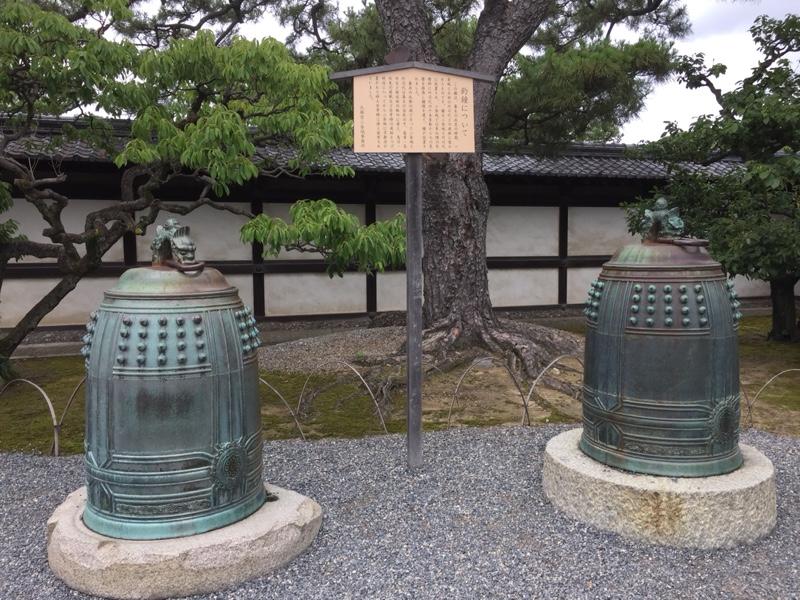

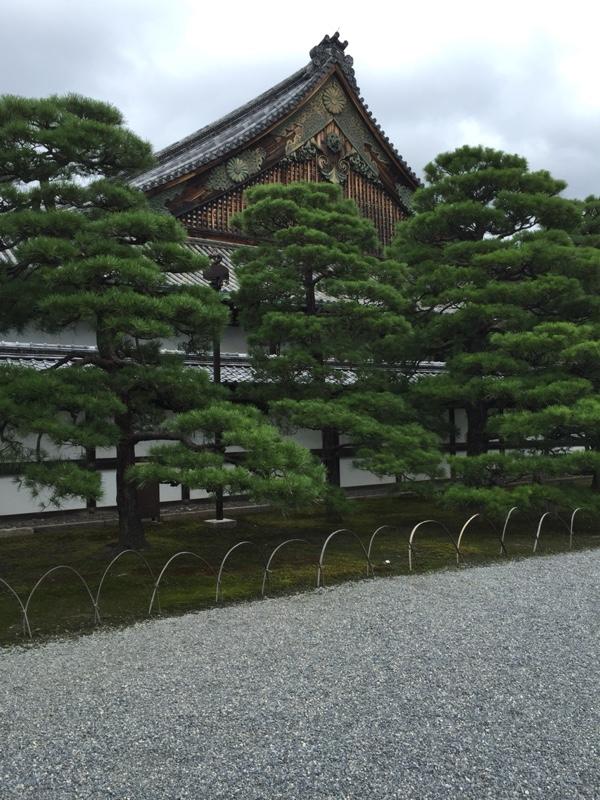

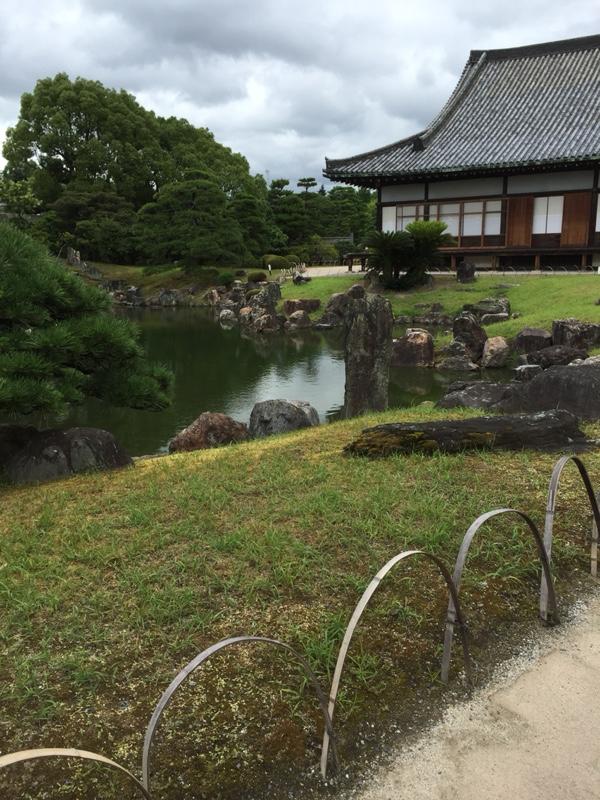 The Seiryu-en Gardens surrounding the palace were only constructed in 1965, and it is divided into two parts – one is this Japanese garden with a large pond, and the other part is a spacious lawn area containing two tea houses, Kountei and Waraku-an tea houses, which are used as reception centres for honoured guests. Wish there was some information on what was here before the ’60s.
The Seiryu-en Gardens surrounding the palace were only constructed in 1965, and it is divided into two parts – one is this Japanese garden with a large pond, and the other part is a spacious lawn area containing two tea houses, Kountei and Waraku-an tea houses, which are used as reception centres for honoured guests. Wish there was some information on what was here before the ’60s.
